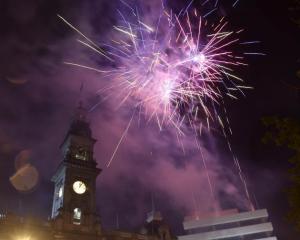Queenstown Lakes has regularly pushed for a visitor levy, and last week Mayor Vanessa van Uden said the idea was raised during discussions with the Government over funding of the council's $70 million convention centre plan.
Whether any levy will go directly towards the centre or for other purposes, it seems the clamour for a levy will only grow.
Queenstown Lakes has a relatively small population and a huge number of visitors: about 30,000 residents and towards three million visitors, in fact.
They all require roads, sewerage and water services and other infrastructure, and this places too large a burden on the limited pool of ratepayers.
While hotels, other commercial accommodation providers and many tourism related businesses pay commercial rates and their employees contribute via household rates or through rent, the strain is acute.
Although the idea visitors pay a small contribution has wide support, the challenge comes when putting it into practice. For Stewart Island, it was no big deal.
The island has only 400 residents and the $5 levy could be added to incoming ferry and plane trips or paid via cruise ships.
There are only about 36,000 visitors a year. Queenstown, in contrast, has many entry points and visitors from everywhere and via many different means.
It also seems specific airport taxes have to go towards airport facilities, and there are anomalies and unfairness with any fundraising scheme.
Around the world, local government levies additional sales taxes, restaurant taxes and bed taxes. There is no way the Government could ever agree to additional sales taxes, and the administration and compliance costs would create a nightmare.
Extra commercial differential rates can be added to hotels and other businesses, and an option used extensively is a levy imposed on hotel stays. This, like other visitor levies, is especially popular because those paying the taxes are out of towners who do not vote.
The danger is these ''bed taxes'' add to costs, especially noticeable for longer stays. It is yet another payment on top of everything else and can cause resentment beyond what it raises. New Zealand is already one of the more expensive countries to visit, and extra amounts here and there on top of GST soon add up.
The most popular destinations can handle such imposts, though, and the various taxes in New York are more than 20% on top of hotel bills.
It was not that long ago that San Francisco contemplated raising its 15.5% hotel tax, but the plan was rejected after local businesses objected. Another issue is that those renting holiday homes can easily avoid such taxes, as can camper vans.
There is also the matter of the boundaries for the application of levies. Would it apply to motels in, say, Makarora and Kingston as well as the Wakatipu?
How would camping grounds fare?Nevertheless, the visitor levy idea has never been closer.
The Tourist Industry Association has acknowledged visitor numbers are putting pressure on areas with small rating bases such as Kaikoura, Queenstown and the West Coast.
Its chief executive has said the association is open to the possibility of visitor levies, but only if they are supported by local communities and are re invested in tourism related projects. It also warns about administration and compliance costs.
And while the Government has been wary of creating precedents, Prime Minister and Tourism Minister John Key has said there are strong arguments for a bed tax, even if the Treasury disapproved of the idea. He personally liked it, as did his tourism officials.
What was required, he said, was a concrete proposal, as came from Stewart Island.
This is what seems to be under way in Queenstown, with the Chamber of Commerce helping to pull the visitor levy proposal together. Clutha Southland MP Todd Barclay is also backing the plans.
Clearly, there is much work to do on the details. If the visitor levy proposal is ever going to fly, however, this appears to be one of its best chances.











